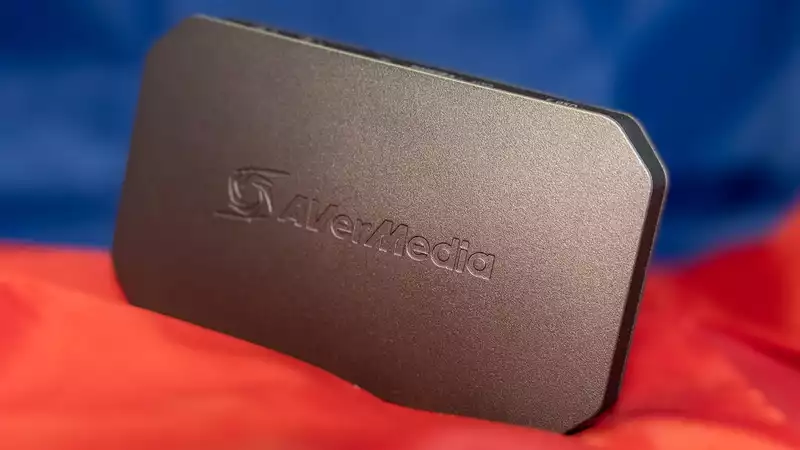HDMI 2.1, along with all the clever tricks that the standard brings, took a while to make it onto consumer capture cards, even though it has been available on the latest PC GPUs and consoles for some time. AverMedia's Live Gamer Ultra 2.1 was the first to offer the ability to pass high and variable frame rates to the monitor during capture, without requiring the source to be set to 60fps.
Even though it is a capture card, this is a box; the connection to the PC is not a PCIe slot, but a single USB 3.2 USB-C port that provides power and data (it can also be a 10Gbps Type-A port if you swap cables). There is an HDMI input for sources to capture and a pass-through input to the monitor, and a 3.5mm jack for a headset or game controller. That's it, except for the huge RGB light bar on the front. Simple enough to put in a bag or put away if you're not a full-time streamer.
Setup is easy. Installing the software took seconds and updating the firmware took two minutes. [We were using the beta firmware, which also allows 1440p/240 and 1080p/360 pass-through, but a stable version will be released near the end of October, with ultrawide 3440x1440p/100 capture to follow. AverMedia's website states that more resolutions and frame rate support will be added gradually.
Once activated, it appears as a capture device in something like OBS Studio (AverMedia's own RECentral, oddly enough, will not be supported until early 2024), and once set up, you can watch the stream. An HDMI 2.1 monitor can be Attach it to the box's HDMI output port and it will pass through the full range of 4K, HDR, VRR, and high refresh rate signals, allowing you to capture at different rates while playing back as smoothly as you like. Maximum via USB 3.2 Gen 2 Type-C port. Capture resolution is 4K/60, but higher 4K frame rates up to 144Hz are passed through to the monitor.
Notably, everything worked flawlessly from the start, without any of the head-scratching and frantic cable unplugging and plugging that is common when setting up a series of video devices. if HDCP is not disabled, a black screen appears and an Avermedia FAQs for more information.
USB-C, HDMI, and 4-pole 3.5mm cables are included. It is quite likely that the user already has these himself in the crate gathering dust under the bed, but it is nice to see that there is enough here for a first-time user to start using it.
The Avermedia app allows users to set independent volume levels for microphone, headphone, and controller audio, and to select the video resolution and frame rate to pass to the capture app and external monitor. There are presets for consoles and mobile devices, and a general "other" for everything else. For good reason, it can be dropped to HDMI 2.0 or 1.4.
RGB lightbars have their uses beyond simply illuminating the room in which you are working; they also need to be aimed at a wall. When all is well, they display a rainbow pattern; when not, they flash a color code. It can be controlled using third-party lighting software, synchronized with others, or turned off completely if it gets in the way of camera feeds or chromakey.
If you're wondering why you need HDMI capture cards, boxes, devices, etc., it's because it's the future: PCs have supported HDMI 2.1 since the GeForce 3000 series, and the PS5 and Xbox Series X. HDR and 8K video as well as higher refresh rates and features like VRR. Few monitors may support these inputs, but one of these is a must for the future of streaming setups.
Capturing video at 1080p/60, even on YouTube or Twitch, will not be possible forever. But more importantly, you can play at your best while capturing intense frame rate-dependent games like competitive esports without compromising just because you have a capture box connected, and the AverMedia box has HDMI 2.1 pass-through Since capturing at 4K has been primarily a PCIe card application, having this capability in an external box that connects via USB will allow SFF PCs and laptops to be leveraged as high-end capture platforms.
The Live Gamer Ultra 2.1 is priced at twice that of the Elgato capture solution, or $300/£280 for Aver's own 4K box. This is much higher than a typical online retailer's USB capture kit, which requires HDMI 2.1 capability to be considered for purchase. However, if 144Hz gaming is important to you or your viewers, HDMI 2.1 is definitely a must.
.

Comments